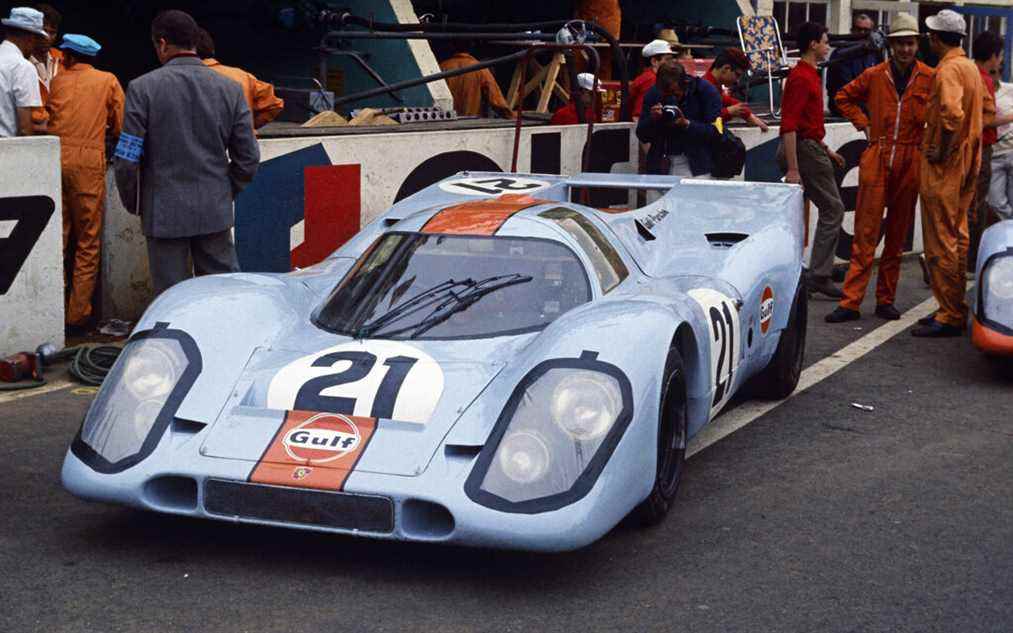At a time when the intricacies of aerodynamics were still poorly understood, squashed bugs turned a stubborn race car into a real winning machine. It seems unthinkable today, but that’s how the Porsche 917 K was born!
Zeltweg circuit in August 1969. Porsche and the JWA team gathered to test the Porsche 917, the prototype whose mission was to win the 24 Hours of Le Mans. John Wyer and his team, who led the famous Ford GT40 to victory, team up with Porsche in 1969. After the 1000 km Zeltweg in Austria, the JWA team wants to test with Porsche to remedy the problem. Chronic instability of the 917. Indeed, the car, although very fast, suffered from a rear axle which oscillated dangerously at high speed.
The work focuses first on the suspensions, then on the deflection of the ailerons to improve handling. With the ailerons turned more, top speed should decrease and stability increase. Except that the pilots do not feel any change on the track! The 917 remains unstable and the very high speeds it is capable of reaching (over 350 km / h) pose new aerodynamic problems.
Photo: Porsche AG
At this time, understanding of how the ailerons worked was still in its infancy. Much remains to be learned about fluid mechanics. And against all expectations, it is a very banal observation that will boost the performance of the car.
Too clean a car?
At the end of the day, the 917s are obviously dirty, especially by the many insects that have crashed into the bodywork. However, by observing attentively the rear part, John Horsman (of the JWA team) notices that the stabilizers placed in front of the wheels are white as snow! Not a single insect has stuck to this spot.
In reality, the shape of the body is not good. The air is deflected before hitting the rear of the car, depriving it of downforce. After expressing his wishes to the Porsche technicians, Horsman grabs some aluminum foil and begins to rework the car, raising the rear end so that stability is finally there.

After a rather artisanal assembly, the car is ready to drive in this configuration the next morning. The pilot Kurt Ahrens gets in the car and quickly improves his times by 3 seconds! In the afternoon, fitting Firestone tires saves an additional 2 seconds.
But more than the chronometric result, it is the behavior of the car that delights the driver. The 917 is transfigured! She now responds correctly and has finally found the balance she was lacking.

Photo: Porsche AG
The birth of the 917 K
The next day, Ferdinand Piëch, then competition director and head of the Endurance program, arrived at Zeltweg. And he had one obsession: aerodynamic drag. We can imagine the concern of Porsche technicians and their apprehension to show this automobile to their boss.
At the sight of this modified rear part, Piëch would not have been delighted to see his car tinkered with like this. However, with the performance telling, he is said to have said, “It looks like your back cover is three seconds faster than ours. So that’s what we have to do ”. The 917 then became the 917 K, which means “Kurz” (“short” in German). The legend was on the move.
